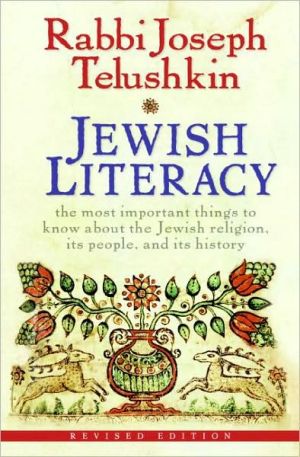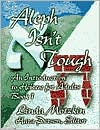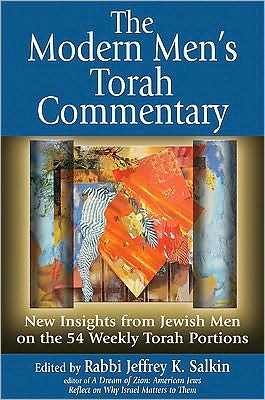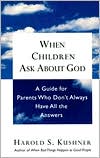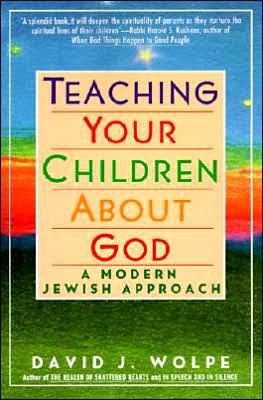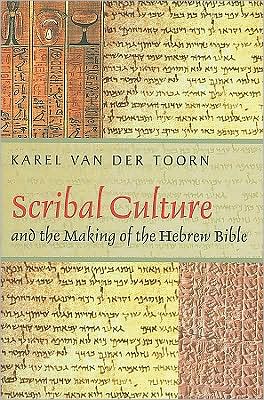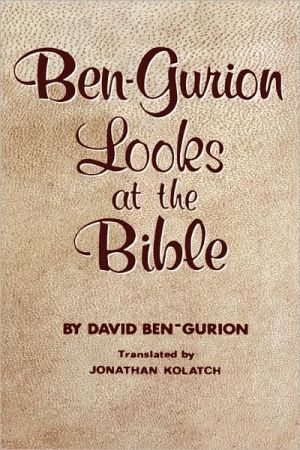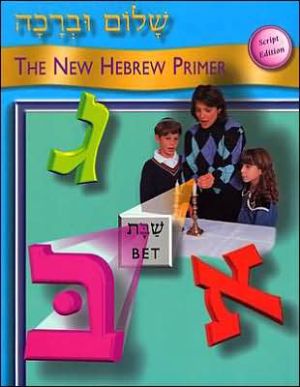Sliding to the Right: The Contest for the Future of American Jewish Orthodoxy
Written by one of this country's leading experts on American Judaism, this book offers a snapshot of Orthodoxy Jewry in the United States, asking how the community has evolved in the years since World War II and where it is headed in the future.\ Incorporating rich details of everyday life, fine-grained observations of cultural practices, descriptions of educational institutions, and more, Samuel Heilman delineates the varieties of Jewish Orthodox groups, focusing in particular on the contest...
Search in google:
"Heilman is one of the most productive, interesting, and important sociologists writing about Jewish communities in the world today. This book is a significant snapshot, filled with Heilman's fine-grained observations of particular cultural practices such as humor, posters, and Rabbi portraits. Heilman is a first-rate thinker, an excellent researcher whose work is richly empirical, and an unusually clear and lively writer."—Barbara Kirshenblatt-Gimblett, author of Destination Culture: Tourism, Museums, and Heritage
Sliding to the Right\ The contest for the future of American Jewish Orthodoxy \ \ By Samuel C. Heilman \ University of California Press\ Copyright © 2006 The Regents of the University of California\ All right reserved.\ ISBN: 0-520-24763-9 \ \ \ \ Chapter One\ Orthodoxy in America after the Holocaust \ Let us put aside our pain and bitter experiences and demonstrate for all the world to see that we are the people of the Torah, blessed with eternal life. Eliezer Gershon Friedenson, Beth Jacob Journal, June 27, 1938\ The branch that may be bare will bloom again- The flowers, once fallen, never rejoin the bough Hua-Pen, "Song of the Forsaken Wife"\ In his analysis of what he calls "The Third Great Cycle in Jewish History," an epoch that begins in the last half of the twentieth century, Irving Greenberg defines the Holocaust as an "orienting event," one that changes the way Jews view the world. While this analysis may or may not be true for other Jews, for the Orthodox-particularly in America-the Holocaust undoubtedly not only set their future direction but also ex post facto reconsecrated and even more importantlyreframed and redefined their past. After the Holocaust, much of that Jewish past was sentimentally perceived, anachronistically understood, and nostalgically recollected in often inaccurate ways. In part this was because the new post-Holocaust reality confronted Orthodoxy most dramatically with the question of whether its past strategies for survival had been correct, whether in light of its massive losses in the Nazi firestorm it could continue to exist, and, if so, what would be its best future course for survival. Nowhere were these questions more urgent than in the Diaspora, which according to a worldview promoted particularly by Zionists (including the "religious" among them) ineluctably led to persecution and ultimately genocide-the inevitable consequences, for the Jews, of being a people bereft of their homeland and dependent on the hospitality, protection, and tolerance of others. All Jewish life in societies not their own, these Jewish nationalists (who now had a state of their own) asserted, must end in maltreatment and banishment. The Holocaust, the argument ran, simply carried this process to its logical and fateful extreme. The facts seemed obvious. In Europe, yeshivas, synagogues, Hasidic courts, and indeed whole communities of the Orthodox (who were easiest to identify and slowest to flee) and many of their leaders had been destroyed or at best decimated by the Nazis and their supporters. The question therefore was whether the fate of the European Jewish Diaspora was a template for the remaining Diaspora Jewish communities-including America-or whether lessons could be learned from Europe to help prevent another disaster.\ Orthodoxy in what would become its new major Diaspora, America, had to answer this question and to deal with the human and institutional reality of its extraordinary losses. The influx of Holocaust refugees and survivors just before (many through the efforts of the Orthodox-sponsored Hatzalah program) and in the aftermath of World War II, which gave American Orthodoxy an important infusion of new blood, made this question even more consequential. Indeed, the proportion of Holocaust survivors who remained Orthodox after arrival in America is twice as high as the proportion of the Orthodox in the American population overall, a figure confirmed in every National Jewish Population Survey since 1970. Postwar Orthodoxy, after all, had to face the question of its own responsibility for those deaths-in great measure because so many of its leaders had urged their followers not to leave Europe's Jewish communities for what they described as the impurities of the cultural melting pot that was America or the heresies of a largely secular and socialist Israel, places in which they argued individual Jews might physically survive but genuine Judaism would not. Finally, as it grew by virtue of the flow of refugees and survivors, American Orthodoxy became overwhelmingly populated by those in its midst who had been traumatized by and survived the events in Europe. One might argue that much of what Orthodoxy has become after the war, particularly in the new American Diaspora, is in some way a reflection of how it came to terms with these issues. In all this, one might argue, Orthodoxy evolved a post-Holocaust ideology and sociology that have played a role in its persistence and character in the ensuing years. In effect, American Orthodox Jews, during most of the years since the end of the Holocaust, have asked themselves, either explicitly or implicitly, if what they have done justifies their survival. Hence this is where the analysis of today's American Orthodoxy must begin.\ The Last 150 Years\ However tragic the Nazi era was for Orthodox Jews and Judaism, it would be a misreading of history to suggest that only the Holocaust affected them. The late nineteenth and twentieth centuries were periods of social flux and cultural change. While a review of this era is far beyond the scope of this chapter, one can recall-albeit telegraphically-that through much of this period Jews experienced the dislocations of mass migration, during which a majority moved (or were chased) from places in which they had lived for generations. They also lived through processes of rapid urbanization, during which the last vestiges of rural Jewry disappeared; then, by the end of the era, at least in America, many would experience the new realities of suburbanization, when whole communities had to be invented from scratch. During the years leading up to the Holocaust, Jews also felt the impact of the sweeping, almost relentless forces of what appeared to many to be the ineluctable imperatives of secularization, when large numbers of people abandoned and often actively spurned the traditional and religious ways of life that had been dominant in favor of something else, mostly shaped by non-Jewish cultural norms. This was a time when Jews became increasingly assimilated into the host cultures around them, at least insofar as they were accepted (the Holocaust, of course, demonstrated the limits of this acceptance). All of this inevitably left the Orthodox who disdained assimilation with a sense of their fragility as a people, along with a cultural fixation on the matter of Jewish survival.\ Uprootedness and change, the basic elements of what Erik Erikson calls "transmigrations," were the essential components of this sense of fragility. The vicissitudes of transmigration and of surviving a variety of assimilationist waves as well as persecutions culminating in the Holocaust made a feeling of "uprootedness" an abiding part of Orthodox identity. Put differently, one might say that for many of these Jews the experiences of the last 150 years fostered a consciousness in which an expectation of change rather than stability became the governing element of life. In varying ways this history seemed repeatedly to force breaks with the past. If previous generations of the Orthodox had shared (at least for a time) a general sense that their future would essentially be no different from their past-barring some miraculous messianic redemption-the Orthodox at the midpoint of the twentieth century, on the contrary, were increasingly convinced that the future was less and less prone to be anything at all like the past. The line between yesterday, today, and tomorrow seemed always to be broken.\ Like all those who undergo such repeated migrations, these Jews found that they often had to suddenly assume "new and often transitory identities" whose purpose was to help them navigate the traumatic passage from one world or way of life to another without feeling as if they have been completely set adrift. Jews therefore often found themselves looking for new ways of defining who they were, a quest for identity that was often indistinguishable from the process of their migration. To be sure, many of the identities they adopted tended to be "liminal" or transitional. The Orthodox, although they wanted to remain true to tradition, albeit in a sometimes purely reactive way, found that doing so was increasingly difficult as the cultural and social contexts in which they tried to do it changed. The Orthodox movement, itself a product of the ferment and change that marked the era, and by no means monolithic, therefore kept trying to redefine what it meant to be Orthodox. Moreover, they were not always successful in holding onto their members. Even in their most hallowed institutions like the yeshivas, interests in the world outside and Zionism and changes in those who were students moved significant numbers out of the confines of Orthodoxy and in the direction of the modern culture. Many sensed what most Jews were coming to believe: the advantage was to those who chose verbesserung, the German-Jewish term for naturalization or acculturation, or at the very least were willing to engage in religious adaptation and reform and break the restraints of traditional Jewish life.\ In response, some of the Orthodox leaders railed against those who broke with tradition, warning loyalists that in such an era of transition it was mandatory to avoid even minor accommodations and to stay within the religious confines of European Orthodoxy. In the face of change, the only possible response was to embrace a more stringent insularity and parochialism that would enable one to avoid or perhaps deny the dislocations of change. Change had to be actively rejected and yesterday frozen in the imagination; no accommodation to local conditions was acceptable, lest it lead to drift. The Orthodox opposition to accommodation and reform came from the belief that any effort to blend Jewish identity with verbesserung was cultural suicide. Moreover, even when they did something new, the Orthodox had to persuade themselves that they were not really changing.\ The so-called neo-Orthodox, who traced their origins to German-speaking Jewry, disagreed. They strove to respond to the experience of transmigration and change by fashioning a life that eschewed the rejectionist approach to accommodation or change and included a sense of belonging to both the host and Jewish cultures in which they found themselves. Theirs was an Orthodoxy that endowed the general civilization that so many of their co-religionists wanted to be part of with ontological meaning and cultural value, even as they remained powerfully loyal and profoundly attached to Jewish tradition and law (Halacha). This was what some called Torah-im-derech-eretz (Torah Judaism combined with the surrounding culture), in terminology that German Rabbi Samson Raphael Hirsch made famous. Such Jews, seeking to participate in civil society, were convinced that, if mined carefully, the surrounding civilization could ultimately contribute positively to their humanity and their Judaism. As such, they became the ideological predecessors of those who later in America came to be called "modern Orthodox" and defined themselves as Jews who grappled "with the issues involved in both civilizations," understanding "their points of conflict and tension." To be sure, to add the adjective modern to the identity "Orthodox" is somehow "to invite the inference that this implies modification in the attachment to tradition." But the neo-Orthodox believed that they could have the associations of the first without fundamentally undermining the associations of the second, something their more tradition-minded opponents would always challenge.\ In general, as noted in the previous chapter, the accommodationist approach was most popular in cultural milieus where features that characterized the surrounding civilization were attractive to Jews and where they had some hope of access to that culture. In nineteenth- and early-twentieth-century Germany, with its high culture, this often became the case, especially for Jews who lived in the cities. In eastern Europe and Poland this was less likely. Here Orthodox Jews more often sought to emphasize their parochialism and sectarian rejection of non-Jewish culture. Looking at their surroundings in the shtetls and pale of settlement where they most frequently found themselves, these Orthodox Jews saw peasants and those whose culture presented little they found attractive or superior to what they had within their own precincts. In practice, therefore, sectarianism for these shtetl Jews was no great sacrifice. Compared to what they saw on the other side of the cultural divide, these Jews could genuinely believe, as a popular maxim put it, that toyreh ist di beste schoyre (the Torah offers us the best goods). But those surrounded by the high culture of Western Europe were not quite as certain.\ The border between the culturally pluralist Hirschian approach and the more sectarian eastern European one was somewhere in central Europe, in the remnants of the Austro-Hungarian empire. Here both types of Orthodoxy could be found. Indeed the conflicts along this frontline in the Jewish ideological battleground were probably the sharpest-which is why the Hungarian region is one to which both the most insular Orthodox sects as well as the most assimilated of modern Jewries can trace their origins. Those on one side of the divide were attracted by the European "high culture" around them more than the Jewish one, while those on the other were repelled by what they saw as the surrounding "low culture," preferring what they viewed as the superiority of Jewish life and tradition.\ The ideological successors of these highly sectarian Jews are today's Haredim, particularly (but not exclusively) those who trace their origins to Hungary and parts of Romania where the Jewish culture wars were most sharply defined. The sectarians encouraged, as noted in our introduction, a purposeful sense of alienation from the contemporary, often enticing, westernized, materialistic world that they believed would lead ultimately to assimilation and the end of true Orthodox Judaism, which was to them the only true Judaism.\ Yet whatever their differences from one another, insofar as they were Orthodox these prewar Jews were clearly steadfastly holding onto a way of life that ran against the rest of Jewish stream. While no one can be certain what would have happened had the Nazis not extinguished European Jewry, it was nevertheless already clear by the eve of the war that Orthodoxy, whatever its orientation, was destined to be at best a minority orientation among Ashkenazic Jews. Certainly that was the case in America, where the Nazi horror did not reach; American Orthodox Jews-those who had been willing to come to the Jewish frontier in the New World-were and continued through most of the twentieth century to be an ever-shrinking minority.\ After the Holocaust, however, the relatively few Orthodox survivors looked around in the ashes of their European Jewish life. Notwithstanding all the erosion of their numbers before the war, the Nazi regime seemed more than anything else to strike the deathblow to Orthodoxy. Or at least so it might have looked in the war's immediate aftermath. The Orthodox Jews were particularly bewildered to discover that proportionately they had been hardest hit and that their strategies for survival had on their face been a terrible mistake, nowhere more so than among those who had been most uncompromising in their Orthodoxy. In the summer of 1945, writing in Diglenu, a publication of the Tzeiray Agudat Yisrael, Moshe Sheinfeld captured the reality that many Jews like him could not help but perceive at the time.\ What do the numbers tell us? In Poland ... about thirty thousand Jews remained, broken in body and spirit. And the proportion of observant Jews among them was totally negligible, since it was those who spoke fluent Polish and were able to pass themselves off as Poles who were saved. In the labor camps it was the master craftsmen and the most robust who survived [and many Orthodox yeshiva boys or elderly rabbinic sages belonged to neither category].... [T]he fact is that religious Jewry in Poland and the Baltic states was effectively annihilated and no longer exists.... The Jews in Slovakia, who were for the most part organized in independent Orthodox communities and excelled in piousness and the pure belief in the sages ..., were also nearly all wiped out. And in Romania it was still more forcefully apparent that the Holocaust had singled out Orthodox Jewry in particular. One hundred and forty thousand Jews from Carpathian Russia, all of them followers of popular Hasidim, were deported to the crematoria in Poland. The same holds for the myriads of village Jews from Marmaros [Hungary] who worshipped God with ardent joy and were wonderfully devoted to their spiritual leaders.\ (Continues...)\ \ \ \ \ Excerpted from Sliding to the Right by Samuel C. Heilman Copyright © 2006 by The Regents of the University of California. Excerpted by permission.\ All rights reserved. No part of this excerpt may be reproduced or reprinted without permission in writing from the publisher.\ Excerpts are provided by Dial-A-Book Inc. solely for the personal use of visitors to this web site. \ \
1Orthodoxy in America after the Holocaust152The numbers623Jewish education as a field of conflict within orthodoxy784Reinventing tradition : when going by the book replaces living on the street1275Machon L'Parnasa : the educational alternative1406Much truth said in jest : humor, role distance, and young orthodox Jews1807Orthodox Jewish calls from the walls : posters and what they teach us2118Toward a postmodern American orthodoxy296

